How to clean a mattress: 7 simple steps using expert-approved methods
Learn how to clean a mattress using baking soda, vinegar, and soap detergent - plus tried and tested methods for how to deep clean a mattress with stains
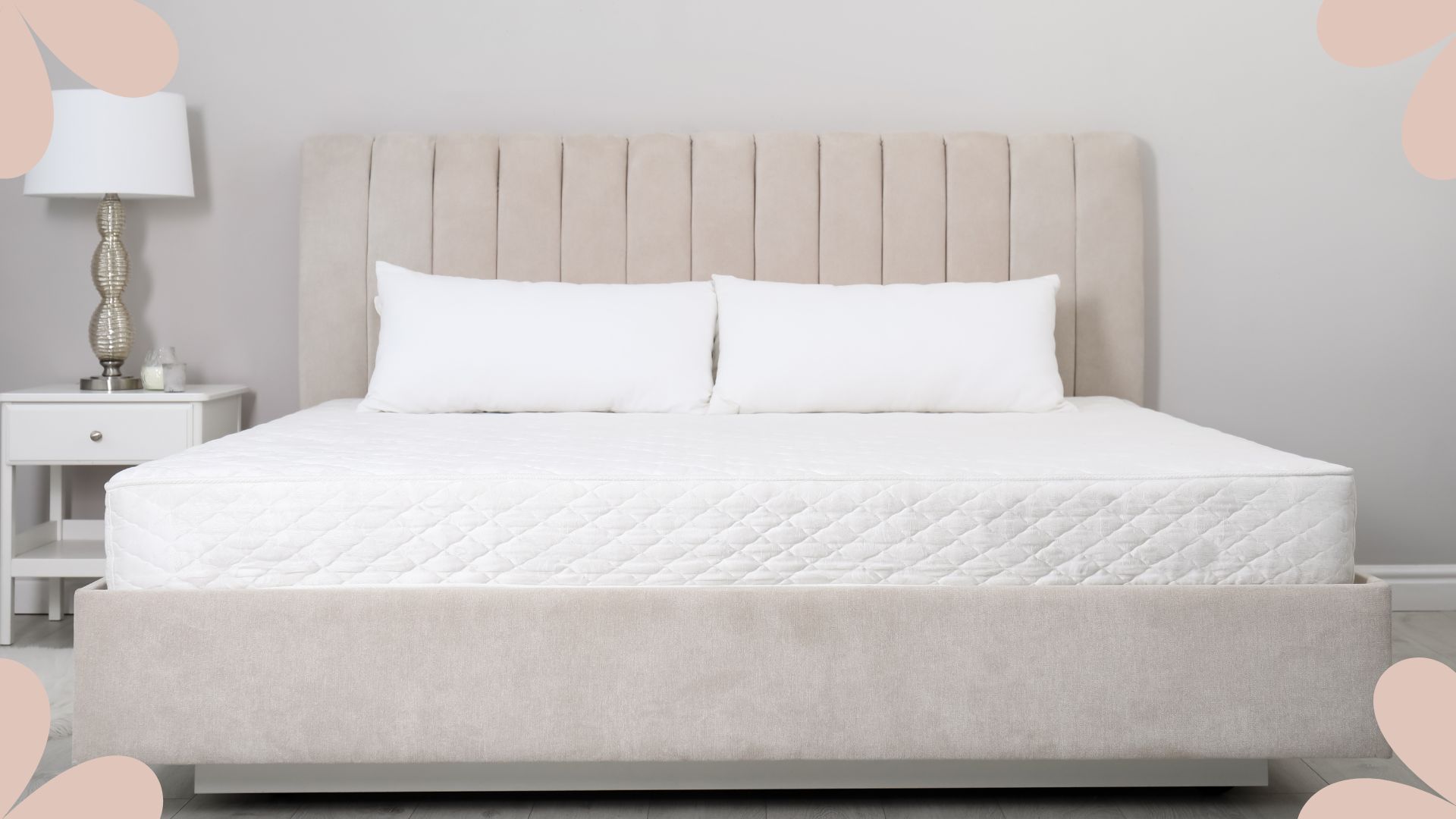

Knowing how to clean a mattress is essential, not only for creating a clean sleep environment but also for your general health and well-being.
Most of us know the basics of getting set up for a good night's sleep: buy the best mattress possible, invest in the softest sheets, and change them regularly - because how often you wash your sheets helps to preserve the wellness of your mattress too. But the importance of cleaning our mattresses as well should not be overlooked.
Mattresses are the perfect environment for dust mites to thrive, due to the warmth and humidity and abundance of gathering dead skin cells, sweat, and body oil to feed on. So it goes without saying that they should be cleaned on a semi-regular basis, and thankfully, it isn’t the laborious task you might think it is.
How to clean a mattress: in 7 simple steps
Follow these seven simple steps to clean your mattress with ease, including advice on how to clean your mattress with baking soda to deodorize and maintain freshness.
1. Gather your cleaning equipment
First, you'll need to make sure you have all the necessary equipment on hand, including a vacuum cleaner with an upholstery attachment, clean cloths, soap, stain remover, and water.
What you will need:
- A vacuum cleaner with an upholstery attachment
- An enzyme cleaner or dish soap to get stains out
- Laundry detergent
- Baking soda
- Cleaning cloths
- Cold water
2. Strip the bed
Take everything off the bed so you start with a clear space to clean thoroughly – including pillows, duvets, sheets, and protectors. Put all of your bedding in the wash, making sure that you put the sheets, pillowcases, and duvet covers on a hot wash to remove all dust and mites.
Sign up for the woman&home newsletter
Sign up to our free daily email for the latest royal and entertainment news, interesting opinion, expert advice on styling and beauty trends, and no-nonsense guides to the health and wellness questions you want answered.
Always check the washing labels on your duvet and pillow and the thread count of your sheets to ensure you minimize the risk of damaging them in the washing process.
3. Vacuum first to remove dust
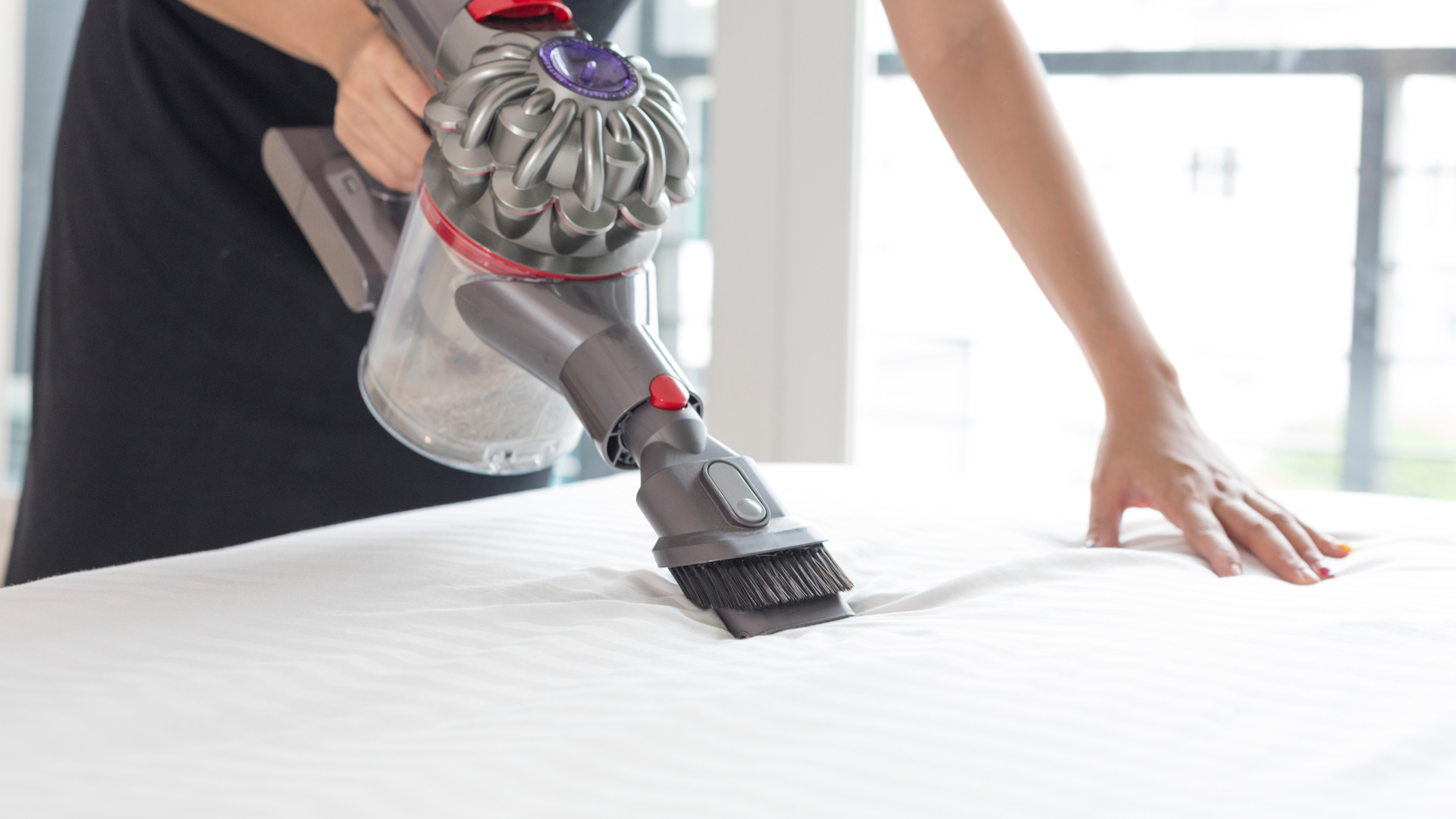
If you have a vacuum with an upholstery attachment, give your mattress a good clean, digging into the crevices and not forgetting the sides and corners. If your best vacuum cleaner doesn't have an upholstery attachment, you can also use a clean cloth or duster.
"Ideally use a vacuum cleaner you wouldn't use on your floor, preferably a handheld vacuum cleaner, or a vacuum attachment that hasn't been used on the floor," advises Andrew Jacobs, Mattress Advisor at sleep brand OTTY.
"Vacuum both sides of your mattress to remove dirt, hair, and dust from your mattress. Make sure to rotate your mattress so you clean every part of it."
4. Spot clean any stains
Like when getting stains out of a carpet, the best practice is to tackle stains as soon as possible. "If you notice stains on your mattress, use a mild cleaning solution to treat them. But, avoid any products that contain chemicals like bleach," advises Andrew.
For coffee, vomit, or urine stains Andrew suggests tackling them with a gentle solution. "Use a sponge dampened with a warm solution made up of upholstery shampoo or a mild detergent," he recommends.
"Use a mild liquid detergent diluted with water," advises April Mayer, a sleep expert from Amerisleep. "Avoid low-quality or powder detergents as they can discolor or alter the texture of the fabric cover."
"Mix detergent and water in equal parts in a bowl. Dip your cloth in the solution and rub it into the stain in circular motions. Let the solution rest on the stain for 30 minutes. Take another damp cloth and wipe the solution off. Gradually rub the cloth over the stain a few times and ensure there’s no detergent left on the topper. Clean with a dry towel by blotting the area."
For more severe stains, it's best to call in the professionals for an expert mattress clean and be sure to put on a mattress protector post-clean to prevent any future stains.
5. Use gentle detergent for a general clean
"Even without any stains, you can use laundry detergent to deodorize and clean the mattress after vacuuming," says April.
"To do so, mix one-part detergent and two parts warm water in a spray bottle. Gently spray over the topper, and try to avoid getting it too wet, as this can damage the memory foam. Move the bottle as you spray to ensure an even spray."
6. Let your mattress air out
It’s a good idea to air your mattress and allow it to breathe after you've cleaned it, as any leftover moisture can encourage mold and mildew to grow, it will also reduce any bad odors from building up in your mattress. Memory foam takes a while to dry. Keep it in a well-ventilated room with fans on to speed up the drying process.
Andrew recommends airing your mattress for around 8 hours. Picking a mattress that has good airflow will ensure constant circulation and could also help the mattress last longer.
7. Flip or rotate the mattress
Finally, if you have a mattress that can be flipped or rotated, flip it to help with the longevity and keep things fresher for longer.
"Flipping your mattress should be done regularly, whether as part of your annual spring clean or not," says a mattress expert from Beddable. "Flipping it and rotating it from head to foot will avoid dirt gathering in one place and prevent sagging to extend its longevity."
Not all mattresses can or should be rotated, so see our guide on how to rotate your mattress for further guidance.
How to clean a mattress with baking soda
For general cleaning Martin Seeley, the sleep expert at MattressNextDay, suggests, "If you have a fabric mattress (so not a latex or memory foam), you can kill dust mites by mixing one cup of baking soda with a few drops of essential oil of your choice. You can then sprinkle the baking soda on the mattress and let it sit for 15 minutes, before using the hose attachment of your hoover to clean the baking soda."
To tackle stains April explains "Baking soda is a good stain remover that also neutralizes odor. Mix one part baking soda and two parts cold water. Rub solution on the stain, and let it sit for 30 minutes. Dip a dry cloth in clean water and remove any residue. Blot dry with a clean towel or paper towel."
Once any big stains are removed, baking soda can also be used to get carry out a general cleanse, to absorb excess moisture and odor, for lasting freshness.
To carry out this overall clean April suggests, "sprinkling baking soda directly onto the surface and vacuum it up after 8 hours or overnight." Leaving you with a fresh, clean finish.
It's worth noting, baking soda is not suitable for use with all mattresses, so be sure to check the manual for specific cleaning instructions and recommendations.
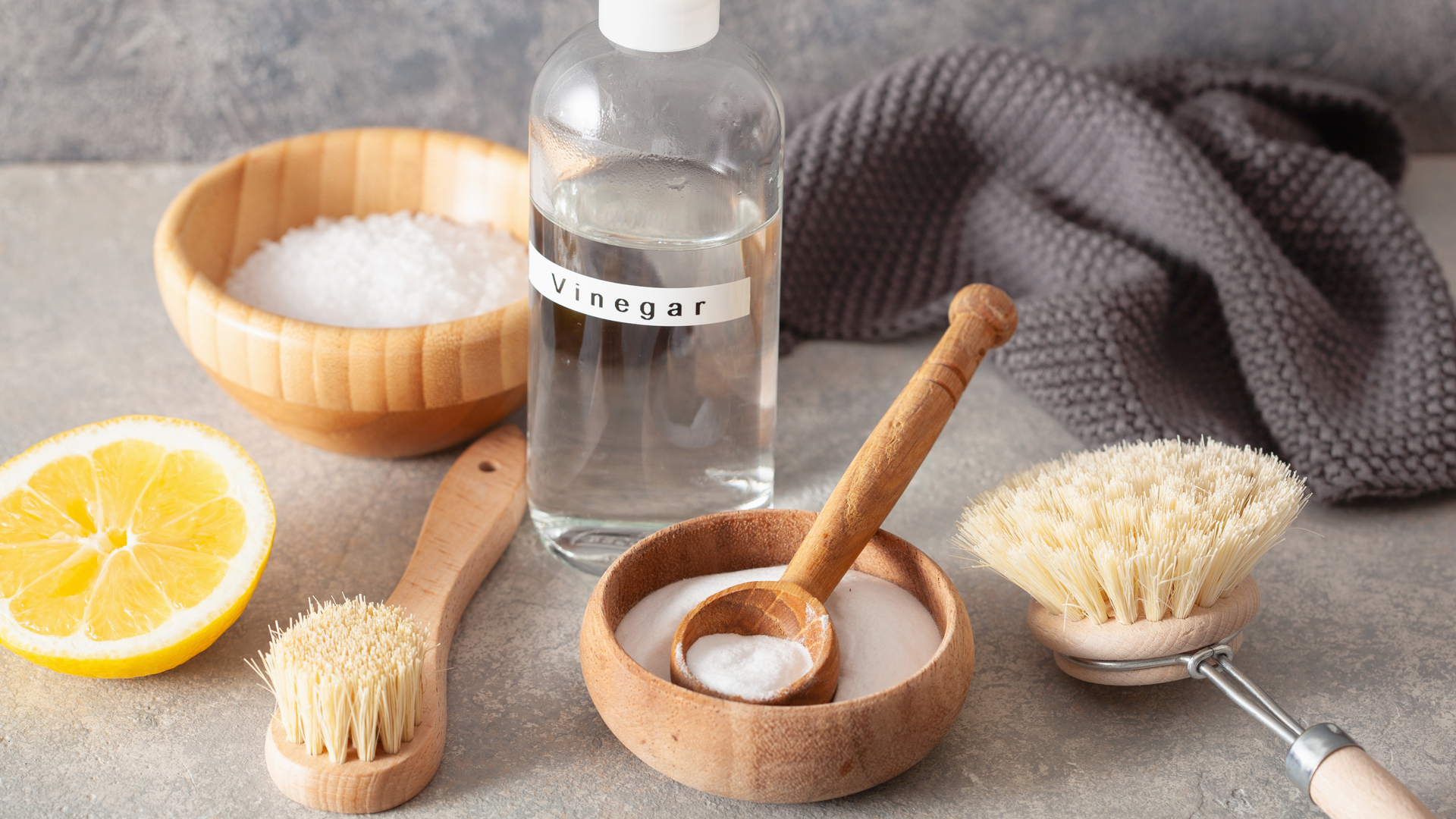
How to clean a mattress with vinegar
Cleaning with vinegar is a popular choice for many household chores, and it can be highly effective when used to tackle mattress stains.
"Mix equal parts vinegar and water in a bowl," advises April. "Take a soft cloth and dip it in the solution. Gently rub into the stain using circular motions, moving inwards, which minimizes the chance of spreading the stain. Repeat until the stain disappears. Once the stain is removed, wipe off the solution with a cloth dipped in clean water. Pat dry with a towel or paper towel."
Due to the strong scent of vinegar, we'd only advise using this solution if the other options have failed to work – because the last thing you want is a vinegar-scented bed.
How to deep clean a mattress: 3 effective methods
When a gentle clean is not hitting the spot you might be asking yourself how do you deep clean a mattress? Luckily the steps for deep cleaning a mattress are not too dissimilar to the ones above, it just requires slightly stronger ingredients to tackle deep stains more effectively.
To deep clean a mattress, you'll need to carry out the following steps: vacuuming, stain removal, deodorizing, and disinfecting.
"You should plan to allocate some time to this and have an alternative place to sleep for the following day or two as the mattress will need enough time to dry and let the deodorizing mixture settle in," advises Jill Zwarensteyn, a certified sleep science coach and the editor at sleepadvisor.org. "Keep in mind that your mattress has two sides, so you’ll want to repeat each step for both sides of the mattress for a thorough and deep clean."
Can you use hair shampoo to clean a mattress?
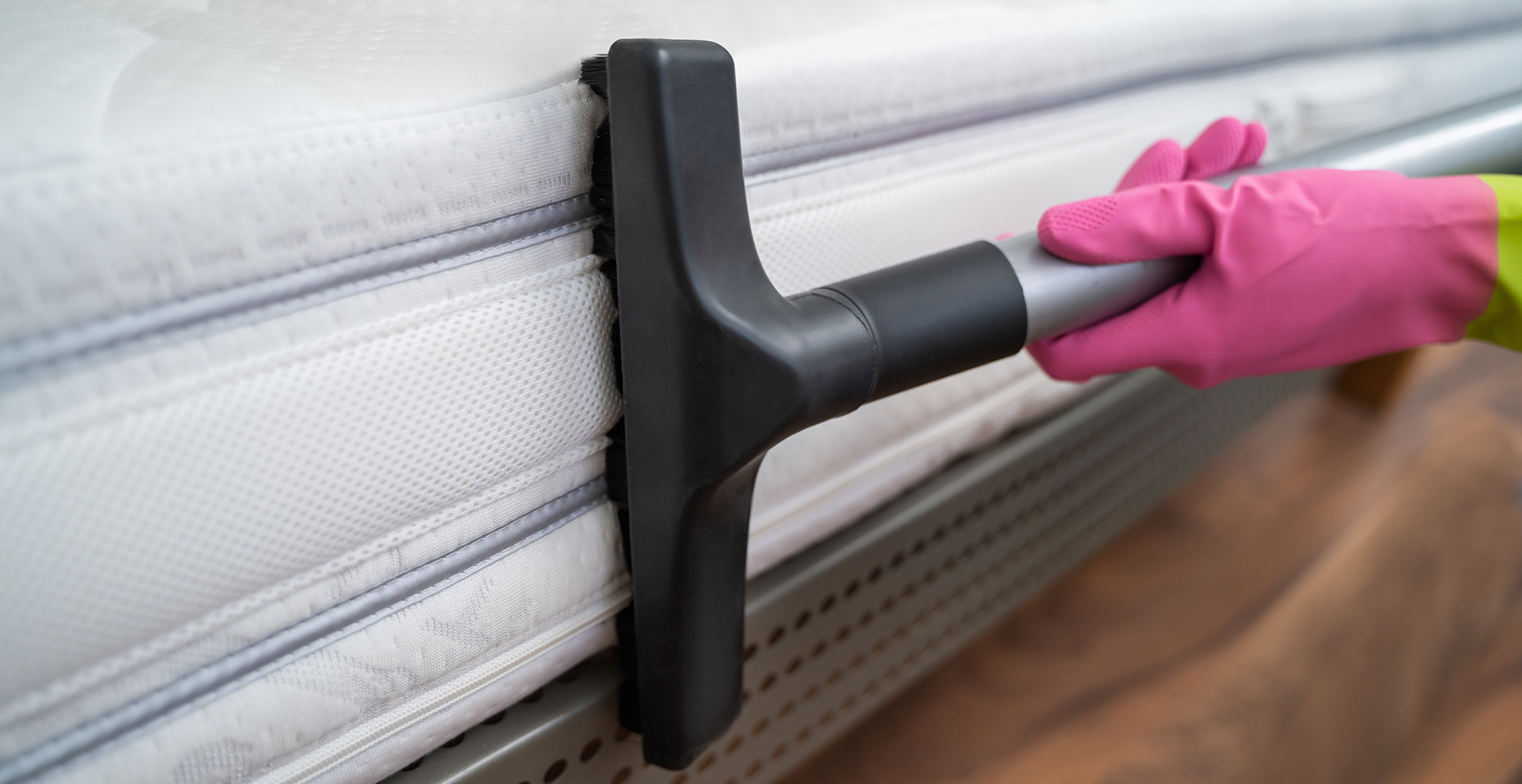
In the same way you would begin to clean a mattress generally, it's best to start by vacuuming the surface to remove as much dirt as possible. By dirt, we mean dead skin cells, stray hairs, pet hair, and dust. Remember to do both surfaces, front and back but also the sides to remove all traces of dirt.
Jill adds, "Because particles can become airborne as you vacuum, give the mattress a second vacuuming to be thorough."
2. Scrub to remove stains
To tackle the stains directly you’ll need an effective cleaning solution and a clean cloth or soft-bristled brush to work it into the fibers. We'd also recommend wearing rubber gloves to protect your skin while doing so.
Jill and her team of experts usually recommend these recipes:
- A mixture of 50% water, 50% vinegar, and half a tablespoon of dish soap.
- One cup of 3% hydrogen peroxide, one tablespoon of baking soda, and half a teaspoon of dish soap.
- Two cups of cold water and one tablespoon of powdered tide or your favorite laundry detergent (this combination will be the most effective for removing bodily fluids).
"Spray the solution onto the stains in the mattress and use a sponge or gentle brush to scrub the area," advises Jill. "Let the liquid sit for about 20 minutes and then press on the stains with a cloth to dry the liquid."
"This will likely be the most difficult part, so experiment with different solutions to see what works best on your mattress. If you’re unsatisfied with the stain removal process, do it again with a different solution and leave the stains soaking for a few minutes longer."
You need to remove the solution as much as you can after cleaning, we recommend using a clean damp cloth to wipe the area free from your chosen cleaning solution.
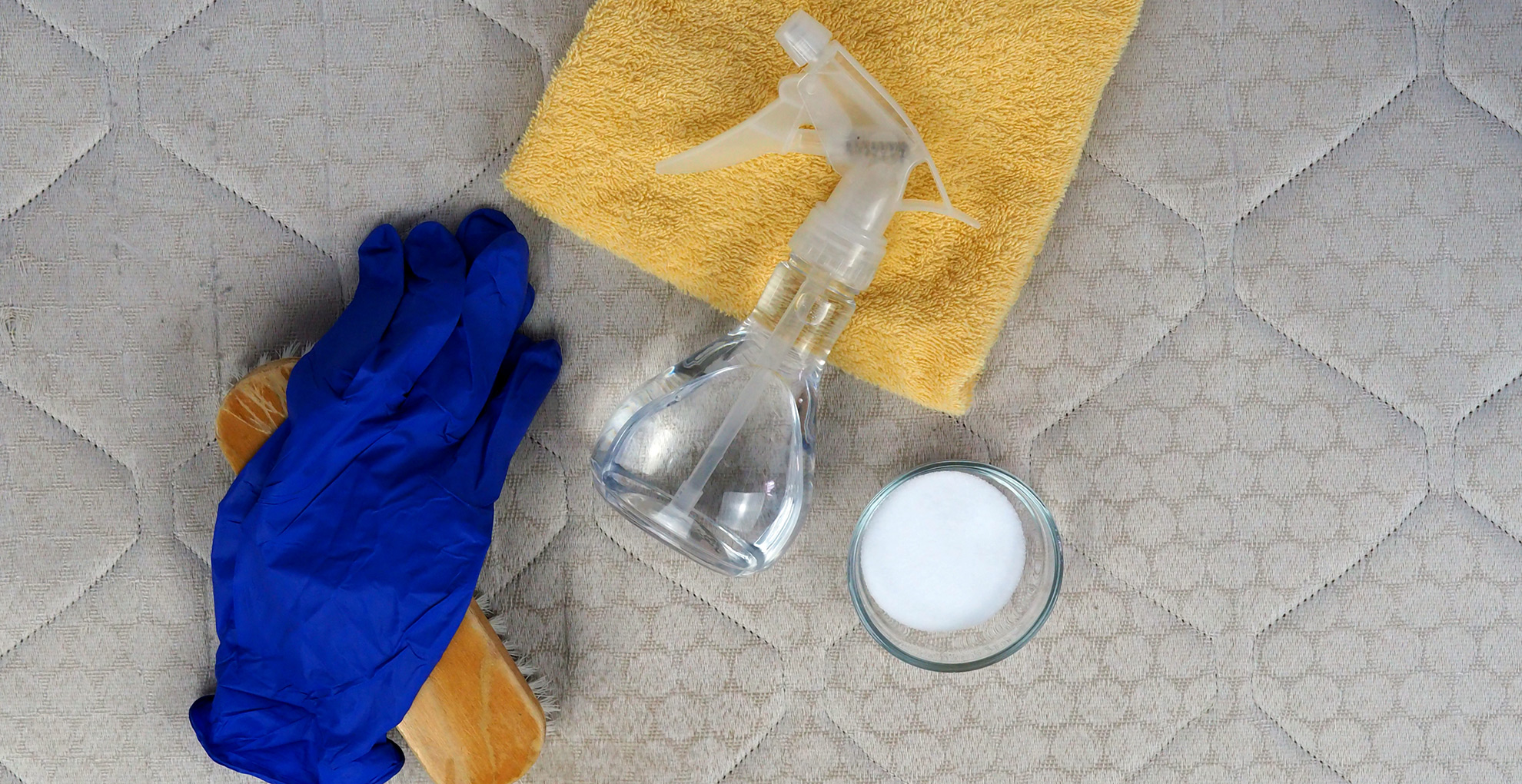
3. Deodorize for freshness
The additional step when deep cleaning your mattress is the act of deodorizing, which experts warn can be a little time-consuming. "While you can use commercial products for deodorizing fabrics, we like to recommend the tested and more natural baking soda method," says Jill.
"Sprinkle baking soda over the surface of your mattress, and let it sit there – ideally for 24 hours to be most effective. You can then vacuum the mixture off the mattress. If you’re deep cleaning an old mattress, double the amount of baking soda."
4. Disinfect for good hygiene
The other additional step when deep cleaning a mattress is disinfecting. "You can disinfect your mattress using a disinfectant spray, a steam cleaner, or a clothing steamer," advises Jill. "Whether you use a spray or a steamer, make sure you cover the entire surface area of the mattress with spray or steam, to thoroughly disinfect."
"You may want to check the label to make sure using a steamer on your mattress is safe, or test steaming only a small area of the mattress to ensure it will not be harmed. Let the mattress air out thoroughly, then flip it and repeat on the other side."
Jill advises: "If you steam your mattress, be sure to keep the steamer at least several inches away from the mattress to avoid too much moisture absorption as this could lead to mold and mildew buildup."
Can you use carpet cleaner on a mattress?
While great for deep cleaning a carpet, steer clear of using a carpet cleaner on a mattress, advises Kate Dutton, director of product and sourcing at Eve Sleep.
“We do not suggest you use a carpet cleaner on mattresses as they could damage the mattress which should be cleaned with care. Automatic cleaners can be heavy duty and destroy the mattress and also deposit a lot of water which could destroy the product and cause mattress springs to rust," she says. "We suggest you hoover your mattress from time to time and wash your protector.”
Can you use hair shampoo to clean a mattress?
There are many cleaning hacks that spring up on social media that we celebrate, many handy cleaning hacks for kitchens in fact, but this latest one is not one of them. TikTok has seen hair shampoo being recommended for cleaning mattresses, Karen Yu an expert from Zinus shares her thoughts on why using hair products is a bad idea.
“Cleaning hacks can be a great way to find effective and simple solutions that can achieve similar or even better results than cleaning products,” says Karen. “However, some hacks can be pretty dubious and cause damage to the items we really want to care for."
“In some cases, hair shampoo is often recommended as a replacement for laundry detergent for clothing. However, when it comes to cleaning a mattress, I recommend steering clear. And that goes for any mattress type, including pocket sprung, memory foam, latex, and more.
"Shampoo lacks the chemical makeup required to thoroughly clean a mattress and keep it in good condition. It can also leave a soapy residue that can permeate, trapping dirt and dust with it. It won't clean your mattress, and it could even cause damage in the long run".
In short, save your best shampoo for your hair – don't waste it trying to deep clean your mattress.
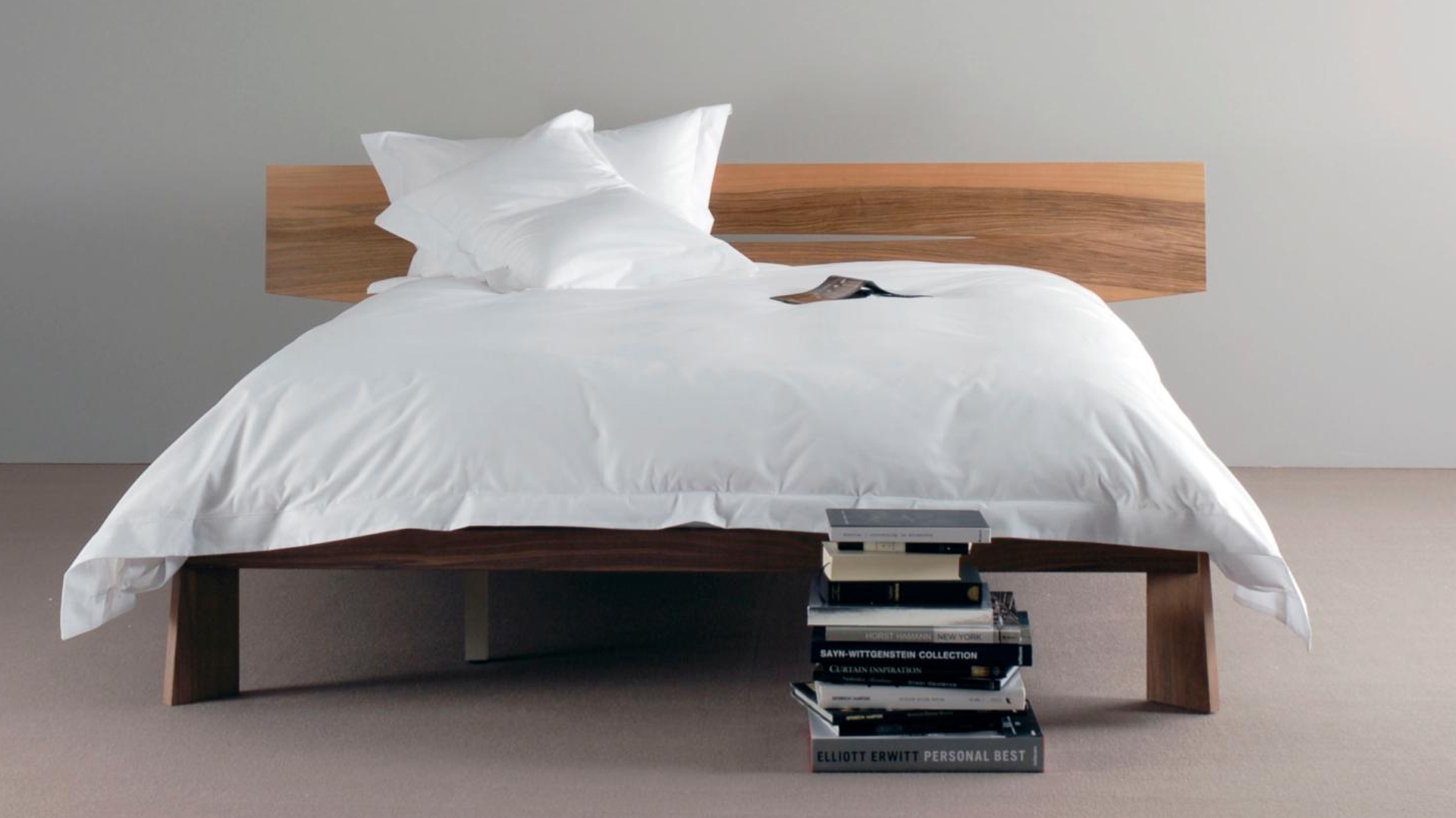
How often should you clean a mattress?
How often you clean your mattress is dependant on many factors, but as a general rule you should aim to clean it at least every six months.
"It is a personal preference, but we suggest that you do this at least every couple of months," advises Kate. "If your cover is removable and washable it is advisable to wash this every 3-6 months."
"We always advise a gentle hoover once every few months and to use a mattress protector. Some are waterproof or anti allergy which is helpful in keeping dust and bed bugs to a minimum. We also suggest airing your bedroom as much as possible as the circulation keeps the mattress fresh and stops a build up of moisture which is absorbed from our bodies."
"If you suffer from allergies, you should clean your mattress more frequently dependent on the severity of your allergies," says Andrew. "For example, during a flare up of eczema we recommend you clean your mattress as soon as possible."
How to keep your mattress fresh between cleans
Any mattress is a huge investment, even those you find as part of the best mattress deals, so it's crucial to do all you can to preserve it for as long as possible. There's also the crucial aspect of good hygiene standards to uphold.
1. Invest in a mattress protector
The first step for preserving your mattress is to invest in a mattress protector. Our bodies can lose up to 500ml of water each night whilst we sleep, so a mattress protector provides an extra layer to shield the mattress from bed bugs and dust mites, keeping it clean and stain-free.
"To keep your mattress looking its best in between deep cleans we recommend a few rules of thumb - firstly, and most importantly, always use a mattress protector. This will shield the mattress from any immediate dirt and grime, protecting it from spillages and, of course, from sweat," says Phillipa MacDermott, Head of Buying & Merchandising at Feather & Black.
"Once a month I make it a habit to pop the mattress protector in the wash and use it as an opportunity to give my mattress a quick brush using a soft brush (never a vacuum cleaner!); a quick and easy way to freshen up the bed."
2. Air your bed every morning
Instead of immediately making the bed the minute your rise, it's best practise to air it for a short period. Do this by removing the pillows and duvet from your bed to and letting your mattress air for at least 20 minutes. According to Neil, this will allow moisture to evaporate and help prevent dust mites.
3. Keep pets out of the bed
As much as we love them it can be beneficial to Keep pets out of the bedroom. Fur from dogs and cats can be a magnet for pollen, dust and other allergens. Keeping pets out of the bedroom is a good way to ensure your mattress is not exposed to these potential allergens.
What are the health risks of not cleaning a mattress?
Your mattress could be a hotbed for dust mites, dirt and mould, which in time could lead to you suffering from viruses, infections or skin issues.
"Dirt and dead skin cells are a haven for dust mites, which leave nasty bites, cause allergic reactions, and can in some cases exacerbate Asthma for sufferers resulting in difficulty breathing, chest tightness, or even trouble sleeping caused by shortness of breath," Neil says.
He added: "Over time, mattresses also absorb moisture, and without regular cleaning and airing this can lead to a build up of mould which can cause allergies to flare up, resulting in coughing, itchy eyes and skin conditions such as eczema."
In other serious cases, a dirty mattress can lead to nasty skin infections, serious viruses and urinary tract infections through a build up of pathogenic bacteria and fungi such as enterococcus, staphylococcus, norovirus and even MRSA.
Ciara McGinley is a meditation practitioner and health journalist. She qualified as a meditation teacher with the British School of Meditation in 2020 and is the founder of Finding Quiet, a series of classes, workshops and retreats that combine meditation practices and mindfulness techniques to make mindful living realistic in an always-switched-on modern world. She is all about bettering that mind-body connection but believes wellness looks different to everyone.
Ciara is also the former Health Channel Editor at woman&home and has covered all things health and wellbeing for years, from fitness to sleep to relationships.
- Emma Kershaw
- Tamara KellyLifestyle Editor
-
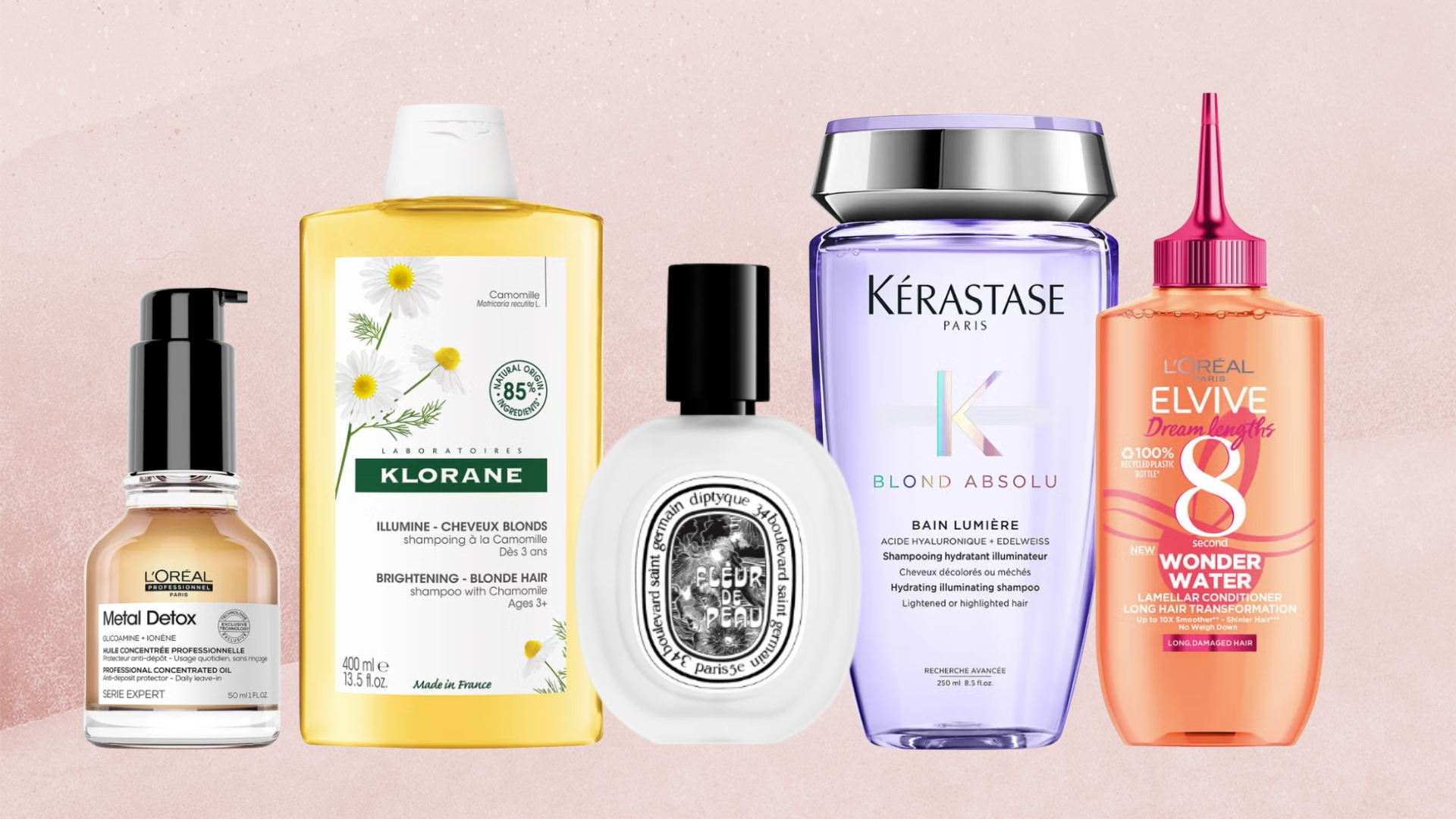 French haircare is our beauty team's (not so) secret to chic and hydrated strands - these are the 5 formulas to invest in
French haircare is our beauty team's (not so) secret to chic and hydrated strands - these are the 5 formulas to invest inWe'd love to do as the French women do and keep mum on our go-to haircare buys, but they're simply too good not to share...
By Naomi Jamieson Published
-
 Vegetables to plant in April: 8 crops to start now for a delicious harvest later in the year
Vegetables to plant in April: 8 crops to start now for a delicious harvest later in the yearDiscover which vegetables to plant in April, and top tips for growing success
By Holly Crossley Published